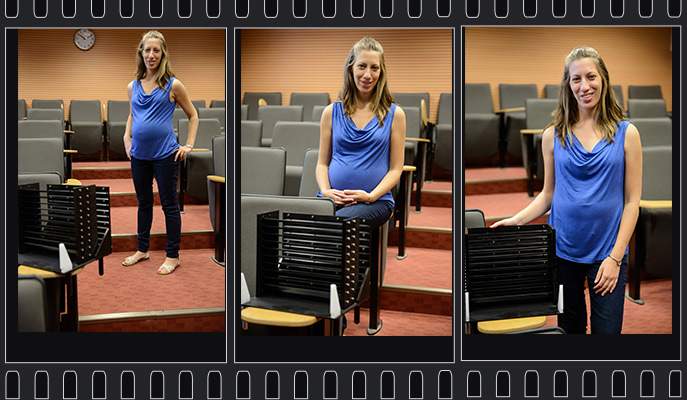Are you a journalist? Please sign up here for our press releases
Subscribe to our monthly newsletter:
One day, moviegoers might be able to watch 3-D movies without having to wear those clunky glasses. A prototype display created by researchers at the Weizmann Institute of Science and the Massachusetts Institute of Technology (MIT) projects 3-D images directly to each seat in the theater.
Dubbed “3-D Cinema,” the system is based on an invention from the turn of the last century called a parallax barrier. Those old-time novelty 3-D images were composed of two photos or more taken from slightly different angles. The two images were then juxtaposed in alternating stripes, and a barrier with slits placed in front of the image let each eye see only the “stripes” taken from one particular angle. As in everyday binocular vision, the brain combines these two views into a smooth 3-D image.

Parallax barrier technology has mostly been superseded by the current 3-D display that requires the viewer to wear the special glasses, in part because its illusion works only if the images are viewed from a fixed distance. But Prof. Anat Levin of the Weizmann Institute’s Computer Science and Applied Mathematics Department realized that movie theater seats are placed at fixed distances from the screen, and its viewers move their heads over a very small range of angles. She has been working closely with Prof. Wojciech Matusik of MIT’s Computer Science and Artificial Intelligence Lab (CSAIL), and the two envisioned a parallax barrier system that would be adjusted for each seat so that each viewer would see the movie in 3-D.
Levin’s student Netalee Efrat led this research together with Piotr Didyk of Saarland University, MMCI / MPI Informatik, and Mike Foshey of CSAIL. With Matusik and Levin, they built a system of parallax barriers on a small but fully functional scale, in the Weizmann Institute of Science. Because movie theaters give everyone a view of the screen by putting the seats on a slope – that is, adding a vertical component to the side-to-side one produced by binocular vision – the prototype display consisted of two sets of parallax barriers, one vertical and one horizontal. Viewed from the side, the moviegoers would appear to be looking at “pinholes” placed before the screen, but from the seats, their brains would be constructing 3-D images from the two different sets of pixels, one projected to each eye.
Efrat cautions that the technology is not yet ready for mass production. The prototype they built, for a 36-seat theater, requires the addition of multiple optical elements such as lenses and mirrors that could be costly to install and align. Theaters might also have to give up on their front-row seats: In a simulation the group created for a larger number of seats, the first row would have to be at least 7 meters away from the screen – somewhere around the middle of today’s movie theaters.
Efrat recently presented a paper describing this research – together with a short demonstration – at the Association of Computing Machinery’s Special Interest Group on Computer Graphics and Interactive Techniques (SIGGRAPH) computer-graphics conference in Anaheim, California. Now that they have shown it can be done, the team is hoping to continue improving on the prototype and eventually create systems for glasses-free 3-D displays and movies.